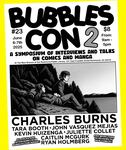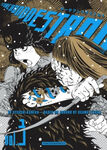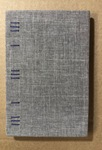
Over three years in the making, Ship of Soiled Doves is the debut graphic novel of Pittsburgh's Nils Balls, known around town for his long running Skeleton Balls strip. Catalyzed by co-conspirator Erin Griffin, this 148 page (very) graphic novel relates a tale that the promoters of the civil war's sesquicentennial might have preferred he hadn't. As a result of the chaos and confusion produced by the Civil War, prostitution boomed in urban areas at the center of the conflict. Women desperate to survive descended on the Nashville encampments filled with Union soldiers and their pay packets. This combination led, unsurprisingly, to an outbreak of veneral disease, which the powers that be in the Union Army soon realized must be addressed. But how? A certain Major General William Rosecrans issued an order to George Spalding, provost marshal of Nashville, to “without loss of time seize and transport to Louisville all prostitutes found in the city or known to be here.” While falling far short of this order, toward this end Spalding commandeered the steamer Idahoe, under the command of one Captain Newcomb, and the rest is history. Here, however, we have "herstory" as readers are provided with the perspective sorely lacking from the history books: that of the (not so) "frail sisterhood" themselves, as they were set upon the Ohio and Cumberland Rivers in the summer of 1863. Ship of Soiled Doves is unique in several respects, starting with it's vertically formatted cover which serves to display a horizontally formatted interior; a combination which provides retailers with their preferred orientation while giving readers a chance to get horizontal and immerse themselves in the lazy river meanderings. The work itself merges form with content as Mr. Balls employs a fearlessly inventive approach to indicating changes in the narrative's emotional register through a variety of shifting page layouts that include anarchical inserts into the comics diagesis of diagrams, casts of characters, formal portraits, and, most importantlly, actual period newspapers filled with apocryphal (yet nonetheless believable) articles. The narrative we are given here doubtless incorporates a healthy dose of fantasy, but this is all to the good as the result is a heady comics stew that drops the reader right down into the thick of a significant, yet little explored aspect of the war between the states.










